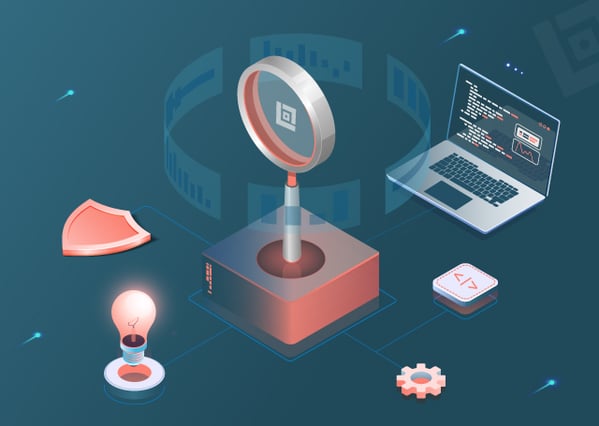
You may not realize it, but you have all the answers to find the right software testing tools right there in front of you. Even if you are unfamiliar with the names of the dozens of automation and manual testing tools currently available, you already have the necessary knowledge to select the best testing tool for your product and team members.
That is because you and your team know your product better than anyone else, which is the first and most important step when selecting a software testing tool. Every project is different, every test environment is unique and every development team has its own strengths and preferences.
Considerations when Evaluating Testing Tools
Matching the optimal software testing tools to a specific product begins with simple questions, such as:
- What problem does the tool solve, and who will use it?
- How does it work, and what are its main components?
- What is the flow of data, and what are its supported environments?
- What is the domain or industry?
- What technology stack, programming languages, etc., does the tool support?
- What type of security features does it include?
- Is it open source or prepackaged software?
Once you and your team are familiar with this information, all that is left to do is use your answers to match your requirements with the available software testing tools. And it is always good to leverage the knowledge of a QA testing expert.
Understanding Automation vs Manual Testing Tools
The questions above define your product and it’s needs in regards to a testing tool, but there are three broader elements that will ultimately decide which software testing tool is right for your release cycle. These are the universal considerations of time, cost and quality.
Every point of the test phase must conform to the timelines of our release cycle, the constraints of our budget and the rigorous nature of the testing needed for a secure and satisfying final product.
These elements will inform the most important software testing selection in each test case-an automated or manual approach.
Consider the four key testing areas of a comprehensive QA checklist:
- Functional testing
- Non-functional testing
- UI testing
- Compatibility testing
All these tests can be performed using either automation or manual testing, but with each choice comes time, cost, quality, and time considerations. Broadly speaking, manual testing is preferred any time user simulation or testing in real time is required, and automated testing is recommended when you are testing at scale or in heavy repetition. Automation is, without a doubt, the faster option, but manual testing brings the benefits of human intuition and problem-solving to the test format.
Keep in mind that you achieve the best possible results and the most comprehensive test conditions when automation is at least paired with a manual testing strategy.
Deciding which areas of your QA are best suited to manual or automation testing will go a long way toward selecting the right software testing tools for your application. Below are a few considerations we recommend you take into account before settling on your software testing tools.
How To Assess Software Testing Tools for Your Needs
After establishing your applications use cases and deciding where and when to apply automated and manual test solutions-it is time to dig a little further into your software testing tool selection criteria. Below are a few considerations about future uses, flexibility and cost of deploying specific tools.
Consider these areas closely when making your final decision:
-
Versatility
Ensure that the tool you select supports the type of testing you need now and in the future. Requirements often change as a product develops, so it’s important to onboard a tool that can scale with your product and team. Be aware that while add-ons may be available to increase a tool’s versatility, it can attract additional cost.
-
Platform Compatibility
Similar to the versatility point above, it is important to consider both your current and future requirements when selecting software testing tools. Your selection should support all the applications and platforms you may target, including desktop, web, client-server, mobile-based applications and more.
-
OS Compatibility
Tools that support a variety of OS configurations are valuable assets. It is also important to have support for older versions of an operating system to allow for reverse compatibility for your product.
-
Level of Skill and Experience Required
Some automation testing tools require advanced proficiency in at least one coding language in order to succeed. Support for simplified test cases, model-based, page-object based, BDD and codeless automation let you involve more of your team in the test process.
-
Test Creation
As implied above, ease of use can be critical. The ideal tool offers several ways to complete a task and is quick and efficient regardless of which team member is performing the task. Even if team members are unfamiliar with scripting, there should still be an alternative approach.
-
Ease of Maintenance
The right tool should generate automated test cases that can be easily amended and reused. Additionally, the tool should provide detailed failure logs so any script error can be easily identified and fixed. This simplifies maintenance and makes test management easier.
-
Cost of Licensing and Support
Is the tool worth the cost? You have to justify both the license cost and the expected add-on purchases along the way. Do not let software fees become a slow drain on your testing budget.
The number of variables involved in selecting appropriate software testing tools can be overwhelming. If you do not have a dedicated QA team in-house or your project requirements exceed your current capacities, seek expert assistance before going any further. After all, uninformed tool selection decisions can cost you time, money and compromise the quality of your final product.
Get Support in Selecting Software Testing Tools
A quality QA professional should have experience with a variety of testing tools and be able to identify a set of tools that meet your project’s requirements. There is an array of quality software testing tools available currently, including Selenium, Sahi, Ranorex, TestComplete, Squish and Appium. Your QA tester, or outsourced partner, should know the pros and cons of each tool and help guide through the tool evaluation process.
QASource designs each test system with direct guidance from you and your product team. Our engineers have delivered QA success in partnership with some of the world’s largest companies. We can design a cutting-edge test suite that is tailor-made to realize your product’s full potential. Let our QA experts guide you through all test tool options with a free quote, or call +1.925.271.5555 today.





